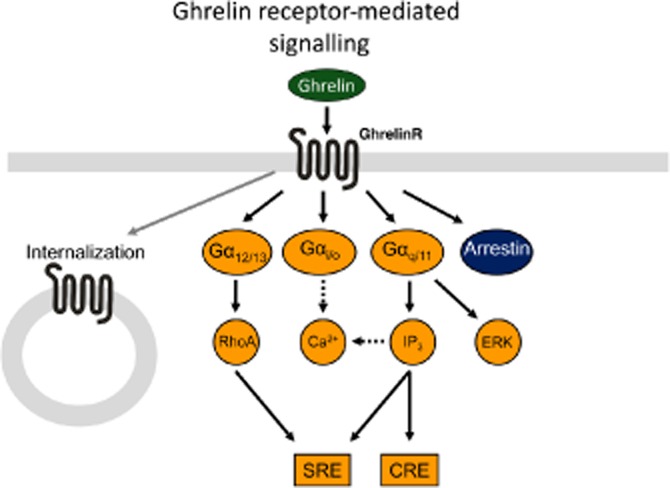Figure 2.

Multiple signalling pathways of the ghrelin receptor. Dotted arrows represent not fully verified signalling pathways, and black full arrows indicate pathways that have been described or suggested for the ghrelin receptor. The ghrelin receptor is able to signal through three different G-proteins, for example Gαq, Gαi/o, Gα12/13 in addition to G–protein-independent arrestin coupling and internalization. Gαq, that activates PLC and leads to increased IP and DAG formation can induce an increase in Ca2+ signalling. However, the pharmacological profiling of different ghrelin receptor agonists indicates that the Ca2+ signalling and IP accumulation originate from separate signalling pathways (Holst et al., 2005), which explains the dotted line. In addition, Gαq coupling may also lead to CRE-mediated transcription activity and probably contributes to the SRE-mediated transcriptional activity. Finally, ligand-mediated Gαq coupling may also stimulate ERK1/2 phosphorylation. Gα12/13 activates RhoA and ROCK resulting in SRE transcription. Gαi/o, generally inhibits adenylate cylase to decrease cAMP accumulation; however, this has not been shown for the ghrelin receptor and it is possible that it can couple to Gαi/o and induce Ca2+ release. Ligand activation of the ghrelin receptor induces recruitment of β-arrestin, which might lead to receptor internalization. Both the constitutive and ligand activation of the receptor induce internalization of the receptor. β-Arrestins might lead to ERK phosphorylation but this is still uncertain.
